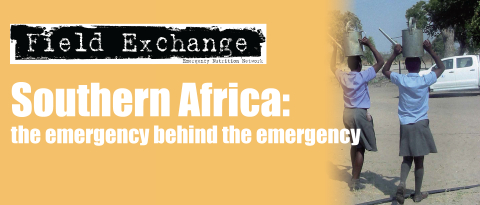Addressing staff turnover in humanitarian organisations
Summary of published research1
The ENN is frequently made aware of the challenges agencies face due to staff turnover in the emergency food and nutrition sector. As trained and highly skilled international and local staff move between agencies or leave the sector, invaluable expertise and experience is lost and programmes suffer. It is easy to oversimplify the causes of high staff turnover and therefore propose simplistic solutions. The paper summarised below contributes to a more nuanced understanding of the issues around staff turnover. (Ed)
Over the past 10 years, staff turnover has become a major concern for humanitarian agencies. It has sometimes been presented as a reality that humanitarian agencies have to live with, but it has also been blamed for reducing the effectiveness of programmes as a result of discontinuity in staffing and loss of institutional memory. Yet, no one has attempted an in-depth study offering a detailed consideration of the causes and consequences of staff turnover in the humanitarian sector. A paper produced by the Overseas Development Institute (ODI) aims to fill this gap by providing guidance and ideas for further action at agency and sector level. It is based on research by People in Aid and the Emergency Capacity Building Project and on over 200 interviews with aid workers, humanitarian organisations, think-tanks and donor agencies.
Staff turnover can range from individuals leaving an organisation during an assignment or at the end of a contract, to planned rotation of international staff between different locations. The factors influencing turnover are diverse and the consequences can be both positive and negative. A certain level of turnover and mobility between working locations is both necessary and healthy. Managed turnover helps to keep the workforce fresh and ensures opportunities for rising talent. There is also some evidence that employees and employers gain from the variety of experience that is provided through temporary assignments within the context of a longer-term career. However, the negative consequences present organisations with considerable challenges and tackling the causes must be a priority for top and senior management. A number of important 'push' factors have been identified, including the nature and context of emergency work, the use of short-term contracts and ensuing job insecurity, the level of support and general quality of human resources (HR) systems, as well as constraints related to people's private lives. These factors appear to have more influence on turnover than 'pull' factors, i.e. those factors that draw employees towards another organisation.
The impact of turnover extends to the sector as a whole. At the individual level, humanitarian professionals are forced to carry the burden of high turnover among colleagues. At programme level, excessive management turnover creates considerable disruption, undermining quality, causing inefficiencies, weakening stakeholder relations and limiting organisational memory. Agencies can find themselves trapped in a perpetual cycle of hiring and deploying new staff, with the risk that avoidable mistakes are repeated and staff become disheartened or eventually quit. Agencies also suffer financial costs and loss of productivity each time an individual leaves a project and moves to a new one. For the sector as a whole, the current shortage of mid-level and senior field managers, which is to some extent related to excessive turnover, encourages unhealthy competition for international staff, even though the pool of local staff remains largely untapped for the development of senior managers. When staff turnover itself becomes one of the causes of turnover, then an investment to reverse the tide will have double value.
Retention strategies can simultaneously target different levels, as shown in Figure 1. The first level is the most basic, and is the only part that appears in the contract signed between employee and employer. The higher up the pyramid, the more unique the relationship between the organisation and its staff becomes, and the more difficult it is to compete with.
Figure 2 outlines the basic steps in defining a retention strategy. But no matter how successful such a strategy is, the question of learning and knowledge management remains. Figure 2 shows that increased awareness and situations analysis are the first steps in defining a retention strategy. Key questions include;
- Does the agency follow key indicators to keep a clear picture of its workforce and its evolution? Is it able to put a figure to the costs of staff turnover?
- If turnover is identified as a problem, has any action been taken?
- Is HR practice in the organisation the result of a carefully thought out strategy or are external elements guiding it?
- Does the agency have a strategy to recruit, develop and retain a workforce that is based not only on experience and technical skills but also on competencies that will privilege potential, resilience and people-management skills?
- Does the organisation have systems that make it easier for staff to become quickly operational, such as standardised operations manuals?
- Does the agency live up to its mission statement and values when it comes to taking care of and supporting its own staff?
- Is the agency committed to developing the skills of its international and national staff and providing them with opportunities to move both vertically and laterally within the organisation?
- Does the agency learn lessons by chance, or as the result of a conscious process to capture and transfer knowledge?


1Loquercio. D, Hammersley. M and Emmens. B (2006). Understanding and addressing staff turnover in humanitarian agencies. HPN Network Paper, No 55, June 2006
Imported from FEX website


